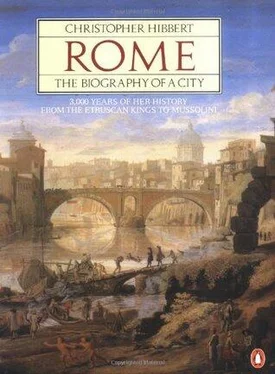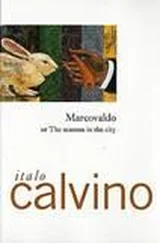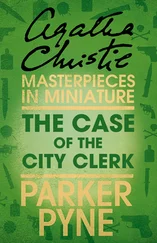Christopher Hibbert - Rome. The Biography of the City
Здесь есть возможность читать онлайн «Christopher Hibbert - Rome. The Biography of the City» весь текст электронной книги совершенно бесплатно (целиком полную версию без сокращений). В некоторых случаях можно слушать аудио, скачать через торрент в формате fb2 и присутствует краткое содержание. Жанр: Культурология, Искусство и Дизайн, на английском языке. Описание произведения, (предисловие) а так же отзывы посетителей доступны на портале библиотеки ЛибКат.
- Название:Rome. The Biography of the City
- Автор:
- Жанр:
- Год:неизвестен
- ISBN:нет данных
- Рейтинг книги:3 / 5. Голосов: 1
-
Избранное:Добавить в избранное
- Отзывы:
-
Ваша оценка:
- 60
- 1
- 2
- 3
- 4
- 5
Rome. The Biography of the City: краткое содержание, описание и аннотация
Предлагаем к чтению аннотацию, описание, краткое содержание или предисловие (зависит от того, что написал сам автор книги «Rome. The Biography of the City»). Если вы не нашли необходимую информацию о книге — напишите в комментариях, мы постараемся отыскать её.
Rome. The Biography of the City — читать онлайн бесплатно полную книгу (весь текст) целиком
Ниже представлен текст книги, разбитый по страницам. Система сохранения места последней прочитанной страницы, позволяет с удобством читать онлайн бесплатно книгу «Rome. The Biography of the City», без необходимости каждый раз заново искать на чём Вы остановились. Поставьте закладку, и сможете в любой момент перейти на страницу, на которой закончили чтение.
Интервал:
Закладка:
Beyond all cities on earth Rome is the greatest and most wonderful. For neither has she been built by the energy of a single man, nor has she attained to such greatness and beauty in a short time. On the contrary, a long succession of emperors, many associations of illustrious men, countless years and wealth… have been required to gather together all the treasures she contains. She remains a monument to the virtues of the world… Destroying Rome, you will lose not the city of another but your own. Preserving her you will enrich yourself with the most splendid possessions of the earth.
Influenced by such pleas as this, Totila held his hand in Rome where the population had been reduced by the sieges to perhaps as few as 30,000. But the city was not long to remain his capital. In 552 he was defeated and killed in a battle in the Apennines against the eunuch Narses, formerly commander of the imperial bodyguard, who had succeeded Belisarius as general of the Byzantine forces.
Once the Ostrogoths had been finally defeated, however, Italy had other invaders. The Lombards, a Germanic people, began to move down from the north in 568 and then to lay waste the countryside outside Rome, driving farmers and peasants, monks and clergy to seek safety in the city where a series of disasters – fires, floods, food shortages and plague – made life miserable for all those inside the walls.
As the sixth century drew to its close, Rome's decay was pitiable. Eyewitnesses painted a desolate picture of a city in which buildings were crumbling into ruins; aqueducts and sewers were in urgent need of repair; public granaries had long since collapsed; monuments were dismembered, legally if deemed to be ‘beyond repair’; statues were looted and violated; the Tiber carried along in its swollen, yellow waters dead cattle and snakes; people were dying of starvation in hundreds and the whole population went about in dread of infection. Those with sufficient money had forsaken their city for the relative comforts of Constantinople. Their large country villas had been abandoned for use as quarries or as living quarters for poor monks. The surrounding fields, undrained, had degenerated into swamps, and mosquitoes infested the plain of the Campagna.
In 590 a long procession of supplicants and penitents, numbering almost the entire population of Rome, could have been seen walking with bowed heads through the streets of the city. Some, already dying, fell down and expired by the way. The survivors marched slowly on until they came to the Mausoleum of Hadrian where, so the faithful reported, the Archangel Michael, captain of the heavenly host and guardian of the sick, appeared in the sky sheathing his sword as a sign that the plague would soon be over. In gratitude for this heavenly deliverance, a chapel was afterwards built above the mausoleum and dedicated to St Michael, and thereafter the fortress which the mausoleum had already become was to be known for all time as the Castel Sant' Angelo.
Leading the penitents that day in 590 was a man from a rich patrician family who had been born in Rome some fifty years before, the great-grandson of Pope Felix III. Strongly drawn to monasticism, he had resigned his position as Prefect of the city, had converted his family's palace on the Caelian hill into St Andrew's Monastery, and had sold the rest of his estate for the foundation of other monasteries elsewhere, all of them, like St Andrew's, governed by rules similar to those established by St Benedict. After taking Holy Orders he had gone to Constantinople as papal nuncio and, a few weeks before the march of the penitents, he had been elected Pope. Complaining that he had never wanted such preferment, Pope Gregory I proved himself not only one of the most saintly men who had held this high office but also an administrator, statesman and diplomat of exceptional gifts, the creator of the medieval papacy. Declaring that he did not intend to have ‘the treasury of the Church defiled by disreputable gain’, he devoted himself to the relief of the poor, reorganizing the system of food distribution which the papacy had taken over from the imperial authorities, and establishing or improving several relief centres, known as diaconiae , which were later to be converted into churches as, for example S. Giorgio in Velabro 26and S. Maria in Via Lata. 27He also took care of the needy among the pilgrims whose numbers were constantly increasing throughout his pontificate.
Dedicated to the conversion of unbelievers, Pope Gregory sent missions from Rome in every direction, into Lombardy, Spain and England, then into Germany, the coastlands of France and the Low Countries. Before long, Christian pilgrims from all these places were arriving in Rome, some of them bringing great wealth, others walking in penniless, several with iron collars round their necks or arms indicating that they were criminals upon whom a pilgrimage to Rome had been imposed as an expiation of their misdemeanours. They crowded into the basilicas, filed through the catacombs, worshipped at the shrines, deposited gifts, made endowments, dropped coins in the bowls of mendicants, or flocked to the diaconiae for food and shelter. Soon guidebooks were provided for them, instructing them what routes to follow, what to look out for, where to see the grill upon which St Laurence had been burnt, or the arrows which had pierced the body of St Sebastian, or the chains with which St Peter had been bound. Pope Gregory himself found the trade in relics distasteful and absurd. He had once discovered some Greek monks digging up ‘martyrs’ bones' in a graveyard where most burials had, in any case, been pagan; and he warned those anxious to purchase relics, like the Byzantine empress who had made inquiries about the head of St Paul, that removing sacred objects and disturbing bones were highly dangerous activities, adding that a group of workmen who had broken into St Laurence's tomb accidantally during building operations had all died within days. Pope Gregory insisted that the strips of linen lowered into graves were as worthy of veneration as the bones they contained.
During St Gregory's pontificate no new churches were built in Rome for the crowds of visitors to the city and its growing resident population. But several existing buildings had already been, or were soon to be, appropriated for Christian use, and others were reconstructed so as to admit more worshippers, to facilitate their movement past the holy places or to keep them at a safe distance from valuable relics. In the days of Felix IV (526–30), the audience hall of the city Prefect on the Via Sacra had been converted into the church of SS. Cosma e Damiano and decorated with mosaics; 28about half a century later, probably in the pontificate of Benedict I (575–9), a former ceremonial hall at the foot of the Palatine, had been transformed into the church of S. Maria Antiqua; 29in the time of Boniface IV (608–15), for the first time a pagan temple was made over to the Christians when the Pantheon became the church of S. Maria ad Martyres; 30and in 625 Pope Honorius I turned the Senate House in the Forum into the church of S. Adriano. 31Pope Gregory's predecessor Pelagius I (556–61) had reconstructed S. Lorenzo fuori le Mura so that the martyr's grave could be seen by pilgrims; and, perhaps at Gregory's own suggestion, an annular crypt, one of the earliest of many, was constructed in St Peter's to ease the flow of pilgrims and to allow them to see relics without being close enough to touch or damage them.
The flood of pilgrims into Rome from Europe, Asia Minor and north Africa was soon to be much increased by thousands of refugees from the Muslim Arabs who were carrying the banner of the Prophet far north and west from their homelands into Syria, Palestine, Egypt, Mesopotamia and Persia, into eastern Europe and across the southern shores of the Mediterranean and into Spain. These refugees settled in Rome where they established their own communities: Greeks, for example, in the area between the Circus Maximus and the Tiber where they built a church, later to be known as S. Maria in Cosmedin but then called S. Maria de Schola [or foreign colony] Graeca. 32
Читать дальшеИнтервал:
Закладка:
Похожие книги на «Rome. The Biography of the City»
Представляем Вашему вниманию похожие книги на «Rome. The Biography of the City» списком для выбора. Мы отобрали схожую по названию и смыслу литературу в надежде предоставить читателям больше вариантов отыскать новые, интересные, ещё непрочитанные произведения.
Обсуждение, отзывы о книге «Rome. The Biography of the City» и просто собственные мнения читателей. Оставьте ваши комментарии, напишите, что Вы думаете о произведении, его смысле или главных героях. Укажите что конкретно понравилось, а что нет, и почему Вы так считаете.












